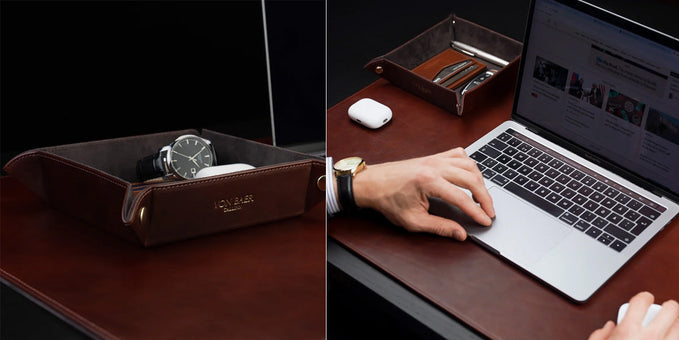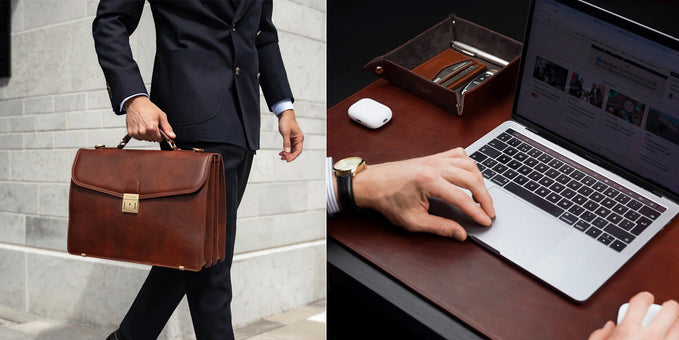Mushroom leather

Do you want to know more about the history of mushroom leather and why it has become so popular over recent years?
More and more top fashion houses are now working with leather.
Read on to find out more about this fascinating organic material.
What exactly is mushroom leather?
Mushroom leather is an imitation leather manufactured from mycelium, which is the vegetative section of a fungus. A fungus is part of the group of eukaryotic organisms. It’s a vegan-friendly alternative to cowhide leather.
Eukaryotic organisms also include smaller microorganisms like yeasts and molds, as well as mushrooms.
Why are Mushrooms so unique?
Mushrooms are somewhat famed for the way they benefit the immune system, protect us from cancer and can slow the ageing process down. They are also said to have spiritual benefits.
Mushrooms have played a significant role in human evolution, particularly in the development of our brain and cognitive abilities.
As our ancestors migrated across different continents, they consumed various mushrooms that may have contributed to the growth of their brains.

One example of the innovative use of mushrooms today is the creation of a new type of material called reishi, which is being developed by MycoWorks, a San Francisco-based start-up.
This material, made from mushroom leather, is not derived from animals or plastics and is a unique blend of art, science, and advanced manufacturing techniques.
The use of mushroom leather is being explored to improve supply chains in the fashion and luxury industries.
Mushrooms are regarded as one of the most sustainable materials it’s possible to work with in the fashion sector.
Let’s take a look at what mushroom fabric is, how it is manufactured and why future shoes and bags are to be made of fungi.
Related:
- Leather
- Faux leather
- Vegan leather
- Bonded vs faux vs real leather
- Bonded leather
- Genuine leather
- Pleather
What is Mycelium?
Mycelium is the network of filaments that make up the underground thread-like structure of fungi. It is the branching structure of mushrooms, made from billions of tiny cells.
Mushrooms are the fruiting bodies of a much larger organism called mycelium, which lives underground.
Mycelium grows in the ground as tiny white threads, forming large networks under the forest floor.
How large is it possible for a mycelium network to grow?
The largest organism currently known to science is a honey fungus residing in the Blue Mountains of Oregon. Its mycelium spans an astounding 2,400 acres (965 hectares) of soil, which is equivalent to an area the size of 1,665 football fields. This organism's remarkable size is attributable to its unique capacity to merge into a single, interconnected entity.
Mycelia from various honey fungus bodies have the capability to merge by fusing together, according to soil scientists. The connecting fungi must have identical genetics to do so. As a result of this fusion, large fungal bodies are formed, which combine extensive networks of fungal "clones" into a single entity.
Mycelium can also be cultivated into almost any type of agricultural waste such as pistachio shells and sawdust. Mycelium does many things that are beneficial for the environment. Mushrooms can remain beneficial to the environment even after they have been transformed into a leather-style material.
How is mushroom leather manufactured?
People first made leather-type material from mushrooms in 2012. This is when product designers Philip Ross and Jonas Edvard began experimenting with homeware products manufactured from mycelium. They quickly discovered how versatile this material is.
The whole process of manufacturing mushroom leather starts with selecting and moisturizing the correct substrate. Substrates are materials which mushrooms use as food and grow on. Common substrates include straw, wood chips, corn and any materials that mushrooms are able to attach to and grow on.
Once the substrate is dampened, it is placed into a bag before it is pasteurized. This process will kill any interfering bacteria. This ensures the mycelium growing process is not only easier but quicker too.
Related:
- Top grain leather
- Leather types
- Leather guide for beginners
- What is leather patina
- Vegetable tanned leather
- Leather tanning
- What is artificial leather?
- What is full grain leather
- Where does leather come from
How long does it take for mushroom leather to grow?
Once the mycelium has spawned, it is placed into bags. The fungi begin to colonize the compound once inside the bags.
From this point, the manufacturing of mycelium just needs time and care. It takes between two and three weeks for the growing process to complete.
The success of the growing process depends on the type of mushroom, the type of substrate, how much sunlight is available, humidity levels, and ventilation.
Once the mass of mycelium has reached the required size, it is thoroughly extracted from the bag. It is then compressed to achieve the required shape and size.
Is it possible to make different kinds of mushroom fabric?
There are currently various ways to make mushroom leather. For instance, manufacturers can change the material texture and color during the compression procedure.

Dyes and changes to the pressing form can ensure the result looks and feels like any kind of animal leather, including alligator, cow, and python. Mushroom leather is then dried and ready to use. What’s more is that these techniques are being enhanced and improved all the time.
Just how sustainable is mushroom leather?
The process of manufacturing mushroom leather is fully sustainable. The natural fiber is biodegradable at the end of its life cycle. Organic waste streams including agricultural waste are valorized during the process.
This kind of leather alternative can also reduce the requirement for industrial animal agriculture, which is the leading supplier of animal leather for fashion. Mushroom leather also has an excellent reputation for its positive environmental impact.
It has the potential to not only replace animal leather and synthetic leather but help solve the plastic pollution issue too.
Mushroom leather is closed-loop
Mushroom leather production follows a closed-loop manufacturing process, which is commonly used in sustainable fashion. This type of manufacturing involves using materials that are sourced from post-consumer waste, which is then recycled, repurposed, and transformed into eco-friendly products.
Mushroom leather is made using a mixture of discarded materials such as straw, wood chips, and corn cobs, which are combined with mushroom spawn to create mycelium. This mycelium is then used to produce vegan-friendly leather.
One of the benefits of mushroom leather production is that the waste generated during the manufacturing process can be repurposed. For example, it can be used as a smoking product in beekeeping or as organic crop fertilizer.
Additionally, mushroom leather is an environmentally friendly material because it is grown and made without the use of any polluting substances. At the end of its life, the material is fully biodegradable and compostable, making it a sustainable alternative to traditional leather.
Related:
- How to reform a leather bag
- How to clean leather bag
- How to restore faded leather bag
- Leather bags for men
- Leather bags for women
Is mushroom leather beneficial for human skin?
Mushroom leather has been found to be a lightweight and flexible material suitable for a variety of products. Tests conducted by a German company called Zvnder have shown that products made from mushroom leather, such as shoes and watch straps, can improve athlete's foot conditions and prevent skin irritation in individuals suffering from eczema when in direct contact with the skin.
These benefits make mushroom leather an attractive alternative to traditional leather for those seeking more sustainable and eco-friendly options.
Mushroom leather is also able to take in a lot of moisture due to its highly absorbent natural characteristics. Shoes manufactured from mushroom leather don’t need any harmful chemical sprays for removing unpleasant odours. The material can also hold a high amount of air. This is great for human skin. Products made from mushroom leather are unusually light and also have a fantastic insulating effect.
What are the most common mushrooms used for making leather?
Currently, the most common type of mycelium used in the production of mushroom leather comes from commercial Oyster mushrooms. Some companies are using specific types of mushrooms to achieve unique leather attributes.
MuSkin is a pioneering material made from Phellinus ellipsoideus. This is a large parasitic fungus which grows in the wild and attacks subtropical forest trees.
Bolt Threads is a well-known producer of mushroom leather that has experimented with different types of fungi. Among their alternatives, Mylo has become the most popular so far. The company recognizes the increasing demand for meat and leather goods as disposable incomes rise globally.
However, they believe that exploiting animals to meet this demand is not sustainable. According to the company, Mylo can be produced in a matter of days through the cultivation of mycelia, without the resource-intensive process of raising livestock.
Minimal resources such as water and electricity are needed to manufacture mushroom leather. Livestock doesn’t need to be raised to make the leather, and the production process requires no greenhouse gases or material waste. This makes it much better for the environment than fossil fuel-based fabrics like PVC and polyurethane.
Is mushroom leather sustainable?
Yes. Mushroom textiles completely remove the requirement for industrial animal agriculture. As the materials used to grow mycelium can be waste materials, the waste that’s generated from producing the mushroom can be reused and repurposed.
Mushroom leather is an environmentally friendly fabric due to the way it can be grown and produced without polluting substances. Once products are finished with, mushroom leather is 100% biodegradable and compostable. As the final materials are so lightweight and flexible, they can be used for a wide range of applications.
Related articles:
- Napa leather
- Pebbled leather
- Leather grades
- How is leather made
- Suede
- PU leather
- Bonded leather vs Faux leather
- Italian leather
- How to tell if leather is real
- Buffalo leather
- Suede vs Leather
- What is Real Leather
- Pu Leather vs Faux Leather
- Alternative Leather
- Chrome Tan Leather
Conclusion
We hope you enjoyed our article on mushroom leather.
If you have any questions or comments, contact us at info@vonbaer.com, or leave them in the comments.
Want to read more? Check out our related Leather pages here.
Sources:
https://thevou.com/fashion/mushroom-leather/
https://www.mycoworks.com/phil-ross-grows-furniture-with-mushrooms
https://fungi.com/products/fantastic-fungi
https://www.lifegate.com/muskin-leather-mushrooms

Author: Albert Varkki
Albert Varkki is the co-founder of Von Baer. He understands leather products as a consumer, supplier, and a manufacturer, helping you with the inside knowledge you need, to choose the perfect leather product for you.
We strive for the highest editorial standards, and to only publish accurate information on our website.
Leave a Comment
Your email address will not be published.






